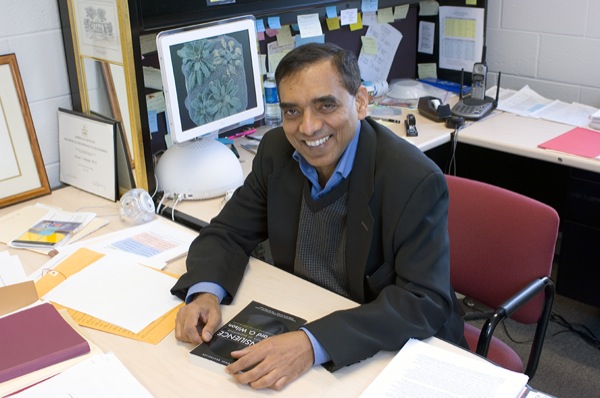
Engineering and autism
UD chemical engineer investigates autism spectrum disorders
8:29 a.m., March 4, 2013--The University of Delaware’s Prasad Dhurjati is a chemical engineer whose background includes systems engineering, biotechnology and artificial intelligence. Yet recently, he has been investigating autism spectrum disorders, neurodevelopmental disorders characterized by cognitive, behavioral and social impairments.
Autism, he explains, has been cited as being linked to gastrointestinal symptoms and is thought to be caused by a combination of genetic predisposition and other environmental factors.
Research Stories
Chronic wounds
Prof. Heck's legacy
After analyzing the available literature, Dhurjati, a professor of chemical and biomolecular engineering, realized that researchers often studied the digestive bacteria and other causes of autism separately. He wondered if a systems biology approach — focusing on how the parts connect to the whole system — could be used to model the connectivity of key contributors to the development of autism spectrum disorders.
“Chemical engineers build reactors to convert chemical molecules into useful products, but when you think about it, one of the best reactors is what I call the human body’s gut reactor — the digestive system,” Dhurjati explains. “It contains thousands of bacterial microbes and cells; it derives energy and nutrients from food and excretes waste. But what happens if one or more of the hierarchical connections in this complex ecosystem breaks or becomes damaged? How does that affect the disease process?”
Dhurjati is working to map out these connections with Myron Sasser, a former UD professor of plant pathology, whose work involved investigating microbes that cause diseases in plants.
In 1991, Sasser founded Microbial Identification Incorporated (MIDI), a biotechnology company based in Newark, Del. MIDI has developed a database of over 5,000 unique fatty acids signatures to identify microorganisms.
Their model proposes a circular relationship between digestive system bacteria, oxidative stress and intestinal permeability. Key bacterial players could include desulfovibrio, bifidobacteria and clostridia.
While it is certain that these aren’t the only connections to be made, Dhurjati believes a multifaceted approach and combination treatment to address all factors at once may produce better results and minimize inter-related effects.
He says that the next step is to make the model more quantitative, so that variables can be added or taken away and the associated effects measured. He believes feedback from others in academia, industry or health care could lead to an improved hybrid computer model that would enable simulation and testing on a “virtual patient.”
“There are many unanswered questions; we are simply raising questions of connectivity from the systems level in hopes of inspiring others to rethink their approach and continue to study this problem from different vantage points,” he says.
To learn more, read the article by Colin A. Heberling, Dhurjati and Sasser published in the March 2013 issue of Journal of Medical Hypotheses, a publication of Elsevier.
Article by Karen B. Roberts








